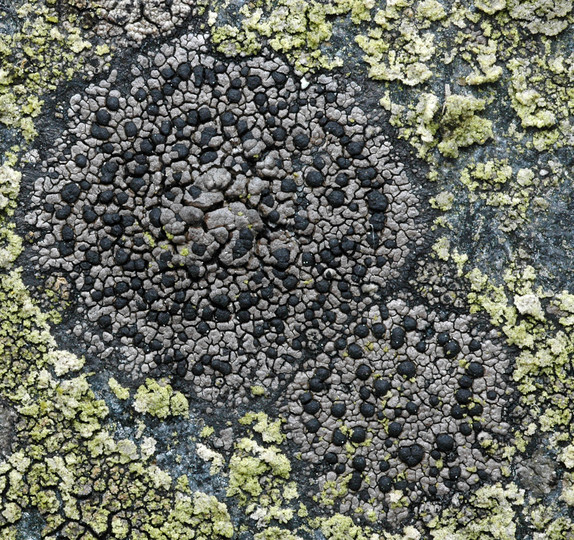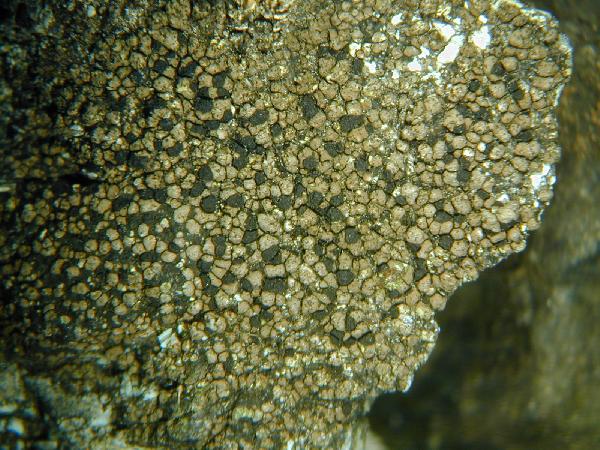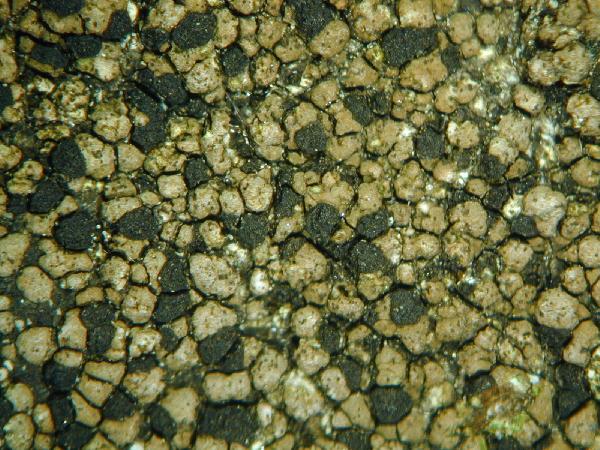Rhizocarpon geminatum Körb.
Syst. Lich. Germ.: 259, 1855.
Synonyms: Biatorina concreta (Ach.) Mudd; Buellia concreta (Ach.) Zwackh; Rhizocarpon concretum (Ach.) Zahlbr.; Rhizocarpon disporum auct. non (Nägeli ex Hepp) Müll. Arg.
Distribution: N - Frl, Ven, TAA (Nascimbene & al. 2022)I, Lomb (Brackel 2010), Piem (Isocrono & al. 2004, Isocrono & Piervittori 2008, Favero-Longo & al. 2015), VA (Piervittori & Isocrono 1999, Isocrono & al. 2008, Favero-Longo & Piervittori 2009, Matteucci & al. 2015c), Emil (Valcuvia & Delucchi 2001, Fariselli & al. 2020), Lig (Giordani & Brunialti 2000). C - Tosc, Sar. S - Bas (Nimis & Tretiach 1999), Cal (Puntillo 1996).
Description: Thallus crustose, episubstratic, areolate, grey to grey-brown, rarely yellowish grey, forming up to 10 cm (usually less) wide patches delimited by a black prothallus, the areoles rounded to weakly angular, flat to usually convex, 0.3-0.8 mm wide, scattered to contiguous. Cortex poorly differentiated, 5-15 µm thick, overlain by a 5-15 µm thick epinecral layer; medulla white or yellowish. Apothecia lecideine, black-brown to black, arising among the areoles, 0.4-0.6(-1) mm across, with a flat to weakly convex, dull, epruinose disc and a rather thin, finally excluded proper margin. Proper exciple thin, brown-black in outer part, pale brown within, K+ purple-red, often with crystals dissolving in K; epithecium reddish brown to brown, 15-25 µm thick, K+ purple-red, with a granular epipsamma dissolving in K; hymenium colourless, 100-140(-160) µm high; paraphysoids coherent, slightly branched and anastomosing in upper part; hypothecium dark brown, K-. Asci 2-spored, clavate, fissitunicate, with a well-developed tholus that is K/I- in lower part and K/I+ blue near the apex, lacking an ocular chamber, Rhizocarpon-type. Ascospores strongly muriform, with 40-50 cells visible in optical view, most of them constricted in the middle, at first pale green, but soon olive-brown to brown, ellipsoid, 40-68 x (15-)18-28(-32) µm, halonate at least when young. Pycnidia frequent, black, subglobose, mainly on the prothallus. Conidia hyaline, filiform, 8-12 x 0.3-0.6 µm. Photobiont chlorococcoid. Spot tests: medulla K+ weakly yellow or occasionally K+ red, rarely K-, C-, KC-, P+ orange-red or P-. Chemistry: without lichen substances, or with variable amounts of stictic, and/or norstictic acids; rhizocarpic acid present in the yellowish forms. Note: a widespread lichen of dry-continental areas, found on steeply inclined faces of base-rich or weakly calciferous siliceous rocks, both in natural and man-made substrata (e.g. on roofing tiles, walls); a chemically heterogeneous species, probably less thermophilous than the closely related Rh. disporum.
Growth form: Crustose
Substrata: rocks
Photobiont: green algae other than Trentepohlia
Reproductive strategy: mainly sexual
Commonnes-rarity: (info)
Alpine belt: rare
Subalpine belt: rather rare
Oromediterranean belt: rare
Montane belt: very rare
Submediterranean belt: extremely rare
Padanian area: absent
Humid submediterranean belt: very rare
Humid mediterranean belt: absent
Dry mediterranean belt: absent
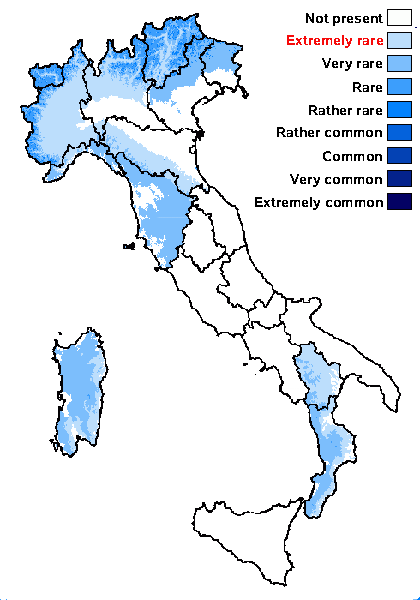
Predictive model
Herbarium samples
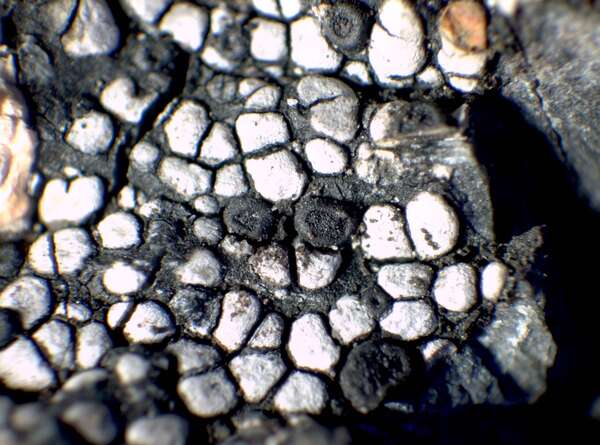

P.L. Nimis; Owner: Department of Life Sciences, University of Trieste
Herbarium: TSB (13637)
2001/12/01
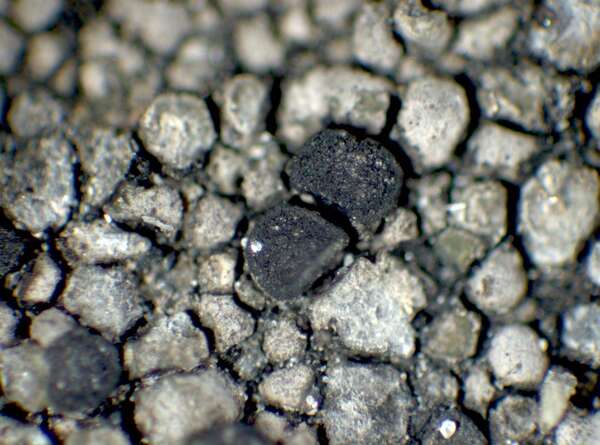

P.L. Nimis; Owner: Department of Life Sciences, University of Trieste
Herbarium: TSB (34630)
2002/01/22
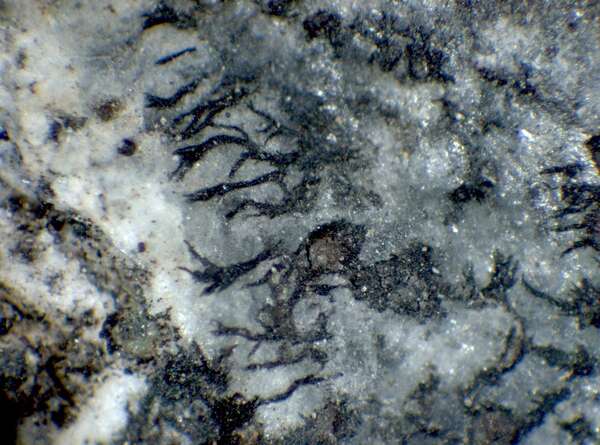

P.L. Nimis; Owner: Department of Life Sciences, University of Trieste
Herbarium: TSB (34630)
2002/01/22
prothalline strands developing from young areole
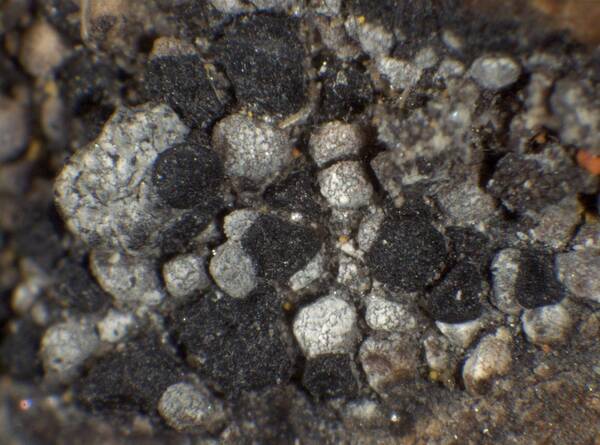
Miris Castello - CC BY-SA 4.0; Owner: Department of Life Sciences - University of Trieste
Antarctica, Terra Nova Bay.
Herbarium: TSB - Antarctic Herbarium
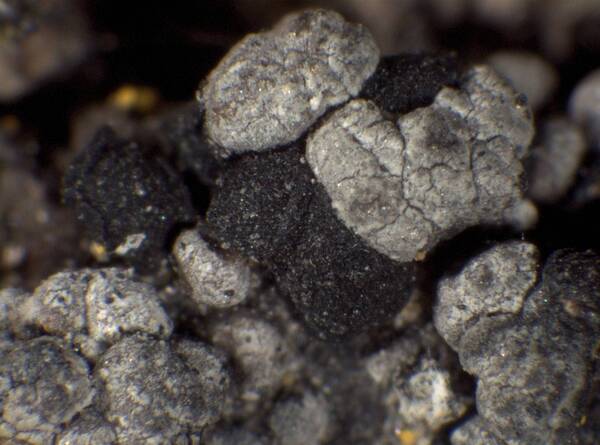
Miris Castello - CC BY-SA 4.0; Owner: Department of Life Sciences - University of Trieste
Antarctica, Terra Nova Bay.
Herbarium: TSB - Antarctic Herbarium
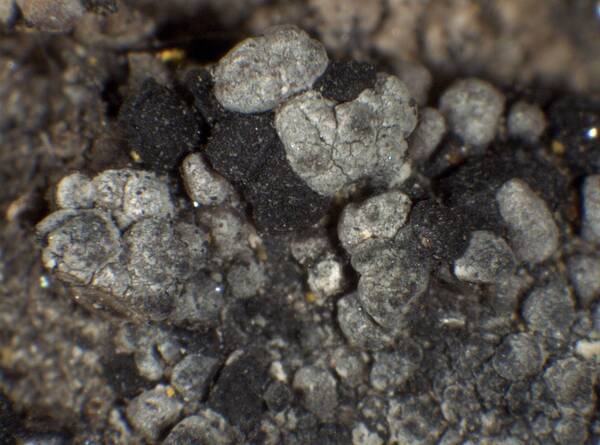
Miris Castello - CC BY-SA 4.0; Owner: Department of Life Sciences - University of Trieste
Antarctica, Terra Nova Bay.
Herbarium: TSB - Antarctic Herbarium
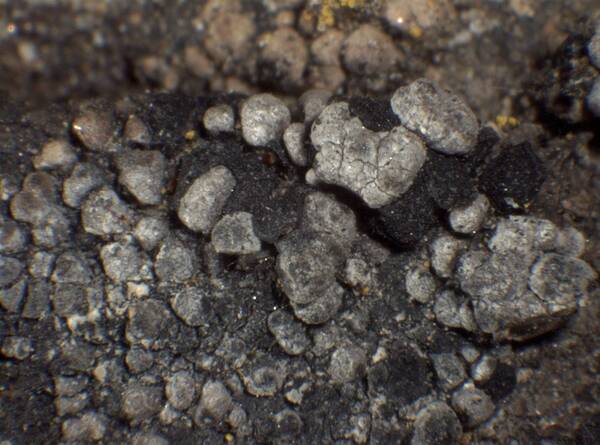
Miris Castello - CC BY-SA 4.0; Owner: Department of Life Sciences - University of Trieste
Antarctica, Terra Nova Bay.
Herbarium: TSB - Antarctic Herbarium
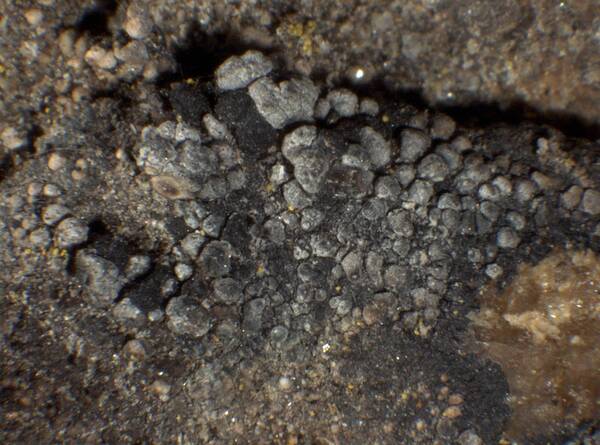
Miris Castello - CC BY-SA 4.0; Owner: Department of Life Sciences - University of Trieste
Antarctica, Terra Nova Bay.
Herbarium: TSB - Antarctic Herbarium


Felix Schumm - CC BY-SA 4.0
[1447], Österreich, Niedere Tauern, Donnersbacher Alpen, Donnersbachwald
am Wege zur Morsbachhütte auf Gneisblock, ca. 1000 m.
Leg. E. Erich Putzler, 09.08.1954, det. O. Klement.
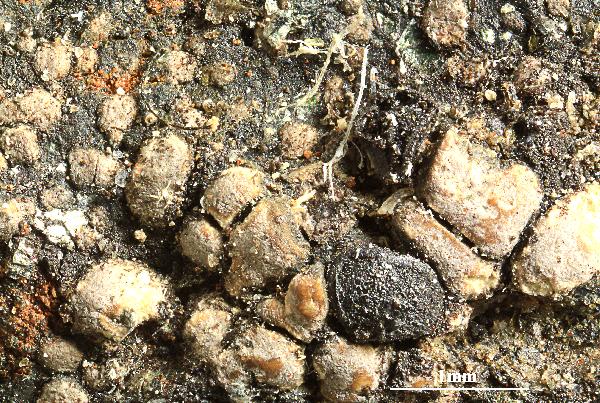

Felix Schumm - CC BY-SA 4.0
[1447], Österreich, Niedere Tauern, Donnersbacher Alpen, Donnersbachwald
am Wege zur Morsbachhütte auf Gneisblock, ca. 1000 m.
Leg. E. Erich Putzler, 09.08.1954, det. O. Klement.
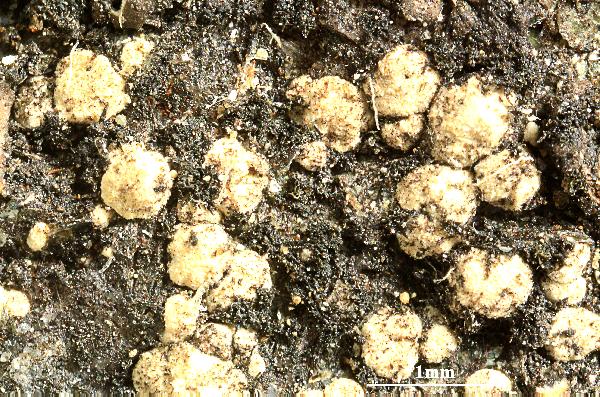

Felix Schumm - CC BY-SA 4.0
[1447], Österreich, Niedere Tauern, Donnersbacher Alpen, Donnersbachwald
am Wege zur Morsbachhütte auf Gneisblock, ca. 1000 m.
Leg. E. Erich Putzler, 09.08.1954, det. O. Klement.
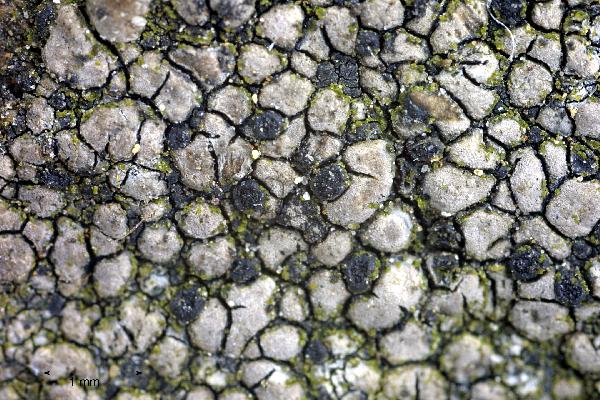

Felix Schumm - CC BY-SA 4.0
[12573], Schweiz, Berner Oberland, südwestlich von Meiringen, Weg
vom Berhotel Große Scheidegg (46°39.358' N, 8° 06.092' E, 1980 m)
zur Schwarzwaldalp (46°40.575' N, 8°08.027' E, 1470 m), ca.1680 m.
Leg. F. Schumm, BLAM-Exkursion 25. Aug. 2006, det. F. Schumm,
2006. - Sporen zu 2, murform, schwarz, 46 x 28 μm; Epith mit K+ rot.


Felix Schumm - CC BY-SA 4.0
[12573], Schweiz, Berner Oberland, südwestlich von Meiringen, Weg
vom Berhotel Große Scheidegg (46°39.358' N, 8° 06.092' E, 1980 m)
zur Schwarzwaldalp (46°40.575' N, 8°08.027' E, 1470 m), ca.1680 m.
Leg. F. Schumm, BLAM-Exkursion 25. Aug. 2006, det. F. Schumm,
2006. - Sporen zu 2, murform, schwarz, 46 x 28 μm; Epith mit K+ rot.
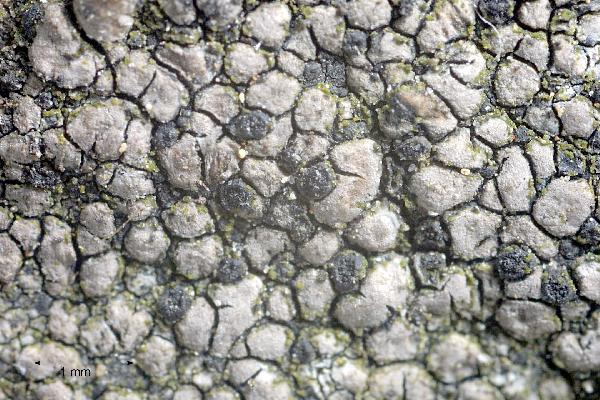

Felix Schumm - CC BY-SA 4.0
[12573], Schweiz, Berner Oberland, südwestlich von Meiringen, Weg
vom Berhotel Große Scheidegg (46°39.358' N, 8° 06.092' E, 1980 m)
zur Schwarzwaldalp (46°40.575' N, 8°08.027' E, 1470 m), ca.1680 m.
Leg. F. Schumm, BLAM-Exkursion 25. Aug. 2006, det. F. Schumm,
2006. - Sporen zu 2, murform, schwarz, 46 x 28 μm; Epith mit K+ rot.


Felix Schumm - CC BY-SA 4.0
[12573], Schweiz, Berner Oberland, südwestlich von Meiringen, Weg
vom Berhotel Große Scheidegg (46°39.358' N, 8° 06.092' E, 1980 m)
zur Schwarzwaldalp (46°40.575' N, 8°08.027' E, 1470 m), ca.1680 m.
Leg. F. Schumm, BLAM-Exkursion 25. Aug. 2006, det. F. Schumm,
2006. - Sporen zu 2, murform, schwarz, 46 x 28 μm; Epith mit K+ rot.
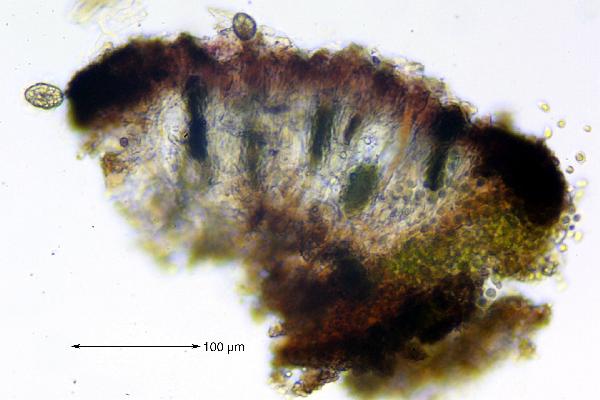

Felix Schumm - CC BY-SA 4.0
[12573], Schweiz, Berner Oberland, südwestlich von Meiringen, Weg
vom Berhotel Große Scheidegg (46°39.358' N, 8° 06.092' E, 1980 m)
zur Schwarzwaldalp (46°40.575' N, 8°08.027' E, 1470 m), ca.1680 m.
Leg. F. Schumm, BLAM-Exkursion 25. Aug. 2006, det. F. Schumm,
2006. - Sporen zu 2, murform, schwarz, 46 x 28 μm; Epith mit K+ rot.


Felix Schumm - CC BY-SA 4.0
[12573], Schweiz, Berner Oberland, südwestlich von Meiringen, Weg
vom Berhotel Große Scheidegg (46°39.358' N, 8° 06.092' E, 1980 m)
zur Schwarzwaldalp (46°40.575' N, 8°08.027' E, 1470 m), ca.1680 m.
Leg. F. Schumm, BLAM-Exkursion 25. Aug. 2006, det. F. Schumm,
2006. - Sporen zu 2, murform, schwarz, 46 x 28 μm; Epith mit K+ rot.


Felix Schumm - CC BY-SA 4.0
[12573], Schweiz, Berner Oberland, südwestlich von Meiringen, Weg
vom Berhotel Große Scheidegg (46°39.358' N, 8° 06.092' E, 1980 m)
zur Schwarzwaldalp (46°40.575' N, 8°08.027' E, 1470 m), ca.1680 m.
Leg. F. Schumm, BLAM-Exkursion 25. Aug. 2006, det. F. Schumm,
2006. - Sporen zu 2, murform, schwarz, 46 x 28 μm; Epith mit K+ rot.
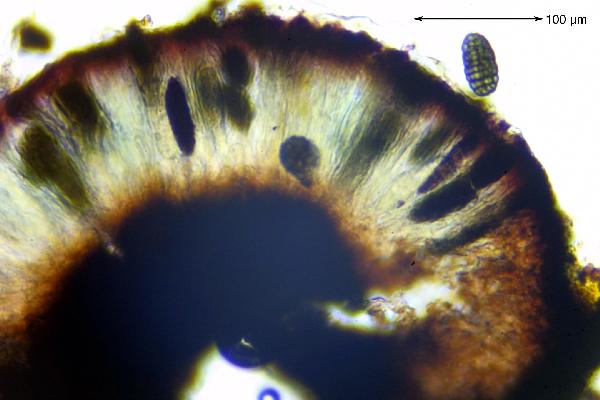

Felix Schumm - CC BY-SA 4.0
[12573], Schweiz, Berner Oberland, südwestlich von Meiringen, Weg
vom Berhotel Große Scheidegg (46°39.358' N, 8° 06.092' E, 1980 m)
zur Schwarzwaldalp (46°40.575' N, 8°08.027' E, 1470 m), ca.1680 m.
Leg. F. Schumm, BLAM-Exkursion 25. Aug. 2006, det. F. Schumm,
2006. - Sporen zu 2, murform, schwarz, 46 x 28 μm; Epith mit K+ rot.


Felix Schumm - CC BY-SA 4.0
[12573], Schweiz, Berner Oberland, südwestlich von Meiringen, Weg
vom Berhotel Große Scheidegg (46°39.358' N, 8° 06.092' E, 1980 m)
zur Schwarzwaldalp (46°40.575' N, 8°08.027' E, 1470 m), ca.1680 m.
Leg. F. Schumm, BLAM-Exkursion 25. Aug. 2006, det. F. Schumm,
2006. - Sporen zu 2, murform, schwarz, 46 x 28 μm; Epith mit K+ rot.
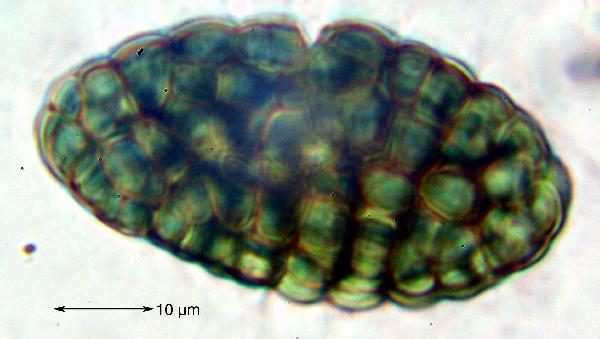

Felix Schumm - CC BY-SA 4.0
[12573], Schweiz, Berner Oberland, südwestlich von Meiringen, Weg
vom Berhotel Große Scheidegg (46°39.358' N, 8° 06.092' E, 1980 m)
zur Schwarzwaldalp (46°40.575' N, 8°08.027' E, 1470 m), ca.1680 m.
Leg. F. Schumm, BLAM-Exkursion 25. Aug. 2006, det. F. Schumm,
2006. - Sporen zu 2, murform, schwarz, 46 x 28 μm; Epith mit K+ rot.
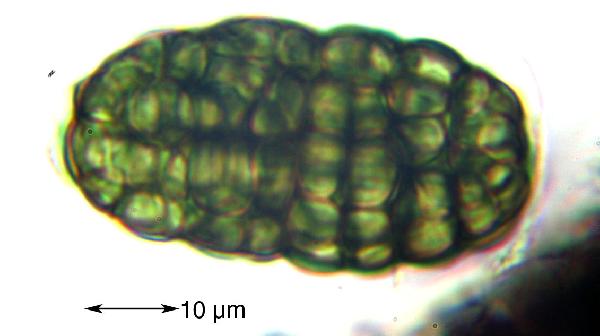

Felix Schumm - CC BY-SA 4.0
[12573], Schweiz, Berner Oberland, südwestlich von Meiringen, Weg
vom Berhotel Große Scheidegg (46°39.358' N, 8° 06.092' E, 1980 m)
zur Schwarzwaldalp (46°40.575' N, 8°08.027' E, 1470 m), ca.1680 m.
Leg. F. Schumm, BLAM-Exkursion 25. Aug. 2006, det. F. Schumm,
2006. - Sporen zu 2, murform, schwarz, 46 x 28 μm; Epith mit K+ rot.
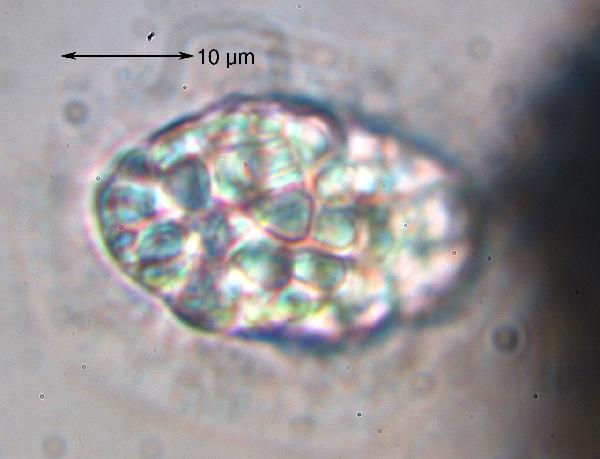

Felix Schumm - CC BY-SA 4.0
[12573], Schweiz, Berner Oberland, südwestlich von Meiringen, Weg
vom Berhotel Große Scheidegg (46°39.358' N, 8° 06.092' E, 1980 m)
zur Schwarzwaldalp (46°40.575' N, 8°08.027' E, 1470 m), ca.1680 m.
Leg. F. Schumm, BLAM-Exkursion 25. Aug. 2006, det. F. Schumm,
2006. - Sporen zu 2, murform, schwarz, 46 x 28 μm; Epith mit K+ rot.
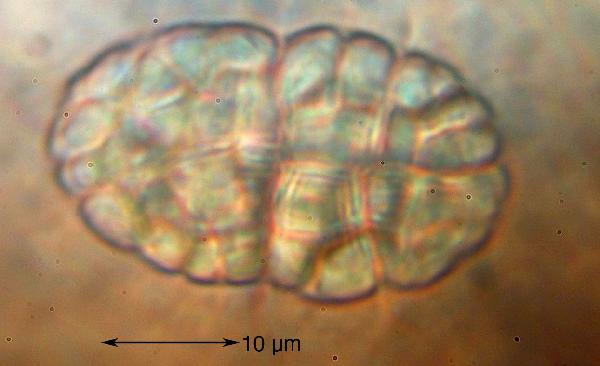

Felix Schumm - CC BY-SA 4.0
[12573], Schweiz, Berner Oberland, südwestlich von Meiringen, Weg
vom Berhotel Große Scheidegg (46°39.358' N, 8° 06.092' E, 1980 m)
zur Schwarzwaldalp (46°40.575' N, 8°08.027' E, 1470 m), ca.1680 m.
Leg. F. Schumm, BLAM-Exkursion 25. Aug. 2006, det. F. Schumm,
2006. - Sporen zu 2, murform, schwarz, 46 x 28 μm; Epith mit K+ rot.
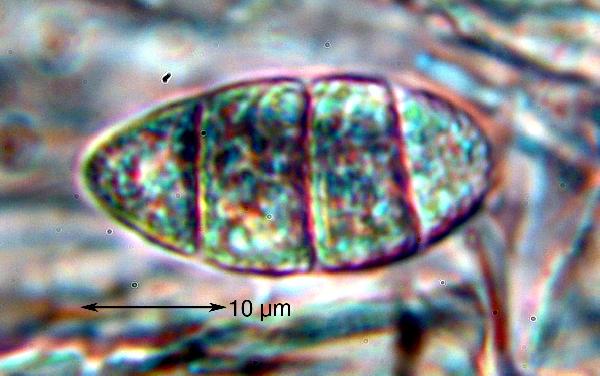

Felix Schumm - CC BY-SA 4.0
[12573], Schweiz, Berner Oberland, südwestlich von Meiringen, Weg
vom Berhotel Große Scheidegg (46°39.358' N, 8° 06.092' E, 1980 m)
zur Schwarzwaldalp (46°40.575' N, 8°08.027' E, 1470 m), ca.1680 m.
Leg. F. Schumm, BLAM-Exkursion 25. Aug. 2006, det. F. Schumm,
2006. - Sporen zu 2, murform, schwarz, 46 x 28 μm; Epith mit K+ rot.
Growth form: Crustose
Substrata: rocks
Photobiont: green algae other than Trentepohlia
Reproductive strategy: mainly sexual
Commonnes-rarity: (info)
Alpine belt: rare
Subalpine belt: rather rare
Oromediterranean belt: rare
Montane belt: very rare
Submediterranean belt: extremely rare
Padanian area: absent
Humid submediterranean belt: very rare
Humid mediterranean belt: absent
Dry mediterranean belt: absent

Predictive model
| Herbarium samples |


P.L. Nimis; Owner: Department of Life Sciences, University of Trieste
Herbarium: TSB (13637)
2001/12/01


P.L. Nimis; Owner: Department of Life Sciences, University of Trieste
Herbarium: TSB (34630)
2002/01/22


P.L. Nimis; Owner: Department of Life Sciences, University of Trieste
Herbarium: TSB (34630)
2002/01/22
prothalline strands developing from young areole

Miris Castello - CC BY-SA 4.0; Owner: Department of Life Sciences - University of Trieste
Antarctica, Terra Nova Bay.
Herbarium: TSB - Antarctic Herbarium

Miris Castello - CC BY-SA 4.0; Owner: Department of Life Sciences - University of Trieste
Antarctica, Terra Nova Bay.
Herbarium: TSB - Antarctic Herbarium

Miris Castello - CC BY-SA 4.0; Owner: Department of Life Sciences - University of Trieste
Antarctica, Terra Nova Bay.
Herbarium: TSB - Antarctic Herbarium

Miris Castello - CC BY-SA 4.0; Owner: Department of Life Sciences - University of Trieste
Antarctica, Terra Nova Bay.
Herbarium: TSB - Antarctic Herbarium

Miris Castello - CC BY-SA 4.0; Owner: Department of Life Sciences - University of Trieste
Antarctica, Terra Nova Bay.
Herbarium: TSB - Antarctic Herbarium


Felix Schumm - CC BY-SA 4.0
[1447], Österreich, Niedere Tauern, Donnersbacher Alpen, Donnersbachwald am Wege zur Morsbachhütte auf Gneisblock, ca. 1000 m. Leg. E. Erich Putzler, 09.08.1954, det. O. Klement.


Felix Schumm - CC BY-SA 4.0
[1447], Österreich, Niedere Tauern, Donnersbacher Alpen, Donnersbachwald am Wege zur Morsbachhütte auf Gneisblock, ca. 1000 m. Leg. E. Erich Putzler, 09.08.1954, det. O. Klement.


Felix Schumm - CC BY-SA 4.0
[1447], Österreich, Niedere Tauern, Donnersbacher Alpen, Donnersbachwald am Wege zur Morsbachhütte auf Gneisblock, ca. 1000 m. Leg. E. Erich Putzler, 09.08.1954, det. O. Klement.


Felix Schumm - CC BY-SA 4.0
[12573], Schweiz, Berner Oberland, südwestlich von Meiringen, Weg vom Berhotel Große Scheidegg (46°39.358' N, 8° 06.092' E, 1980 m) zur Schwarzwaldalp (46°40.575' N, 8°08.027' E, 1470 m), ca.1680 m. Leg. F. Schumm, BLAM-Exkursion 25. Aug. 2006, det. F. Schumm, 2006. - Sporen zu 2, murform, schwarz, 46 x 28 μm; Epith mit K+ rot.


Felix Schumm - CC BY-SA 4.0
[12573], Schweiz, Berner Oberland, südwestlich von Meiringen, Weg vom Berhotel Große Scheidegg (46°39.358' N, 8° 06.092' E, 1980 m) zur Schwarzwaldalp (46°40.575' N, 8°08.027' E, 1470 m), ca.1680 m. Leg. F. Schumm, BLAM-Exkursion 25. Aug. 2006, det. F. Schumm, 2006. - Sporen zu 2, murform, schwarz, 46 x 28 μm; Epith mit K+ rot.


Felix Schumm - CC BY-SA 4.0
[12573], Schweiz, Berner Oberland, südwestlich von Meiringen, Weg vom Berhotel Große Scheidegg (46°39.358' N, 8° 06.092' E, 1980 m) zur Schwarzwaldalp (46°40.575' N, 8°08.027' E, 1470 m), ca.1680 m. Leg. F. Schumm, BLAM-Exkursion 25. Aug. 2006, det. F. Schumm, 2006. - Sporen zu 2, murform, schwarz, 46 x 28 μm; Epith mit K+ rot.


Felix Schumm - CC BY-SA 4.0
[12573], Schweiz, Berner Oberland, südwestlich von Meiringen, Weg vom Berhotel Große Scheidegg (46°39.358' N, 8° 06.092' E, 1980 m) zur Schwarzwaldalp (46°40.575' N, 8°08.027' E, 1470 m), ca.1680 m. Leg. F. Schumm, BLAM-Exkursion 25. Aug. 2006, det. F. Schumm, 2006. - Sporen zu 2, murform, schwarz, 46 x 28 μm; Epith mit K+ rot.


Felix Schumm - CC BY-SA 4.0
[12573], Schweiz, Berner Oberland, südwestlich von Meiringen, Weg vom Berhotel Große Scheidegg (46°39.358' N, 8° 06.092' E, 1980 m) zur Schwarzwaldalp (46°40.575' N, 8°08.027' E, 1470 m), ca.1680 m. Leg. F. Schumm, BLAM-Exkursion 25. Aug. 2006, det. F. Schumm, 2006. - Sporen zu 2, murform, schwarz, 46 x 28 μm; Epith mit K+ rot.


Felix Schumm - CC BY-SA 4.0
[12573], Schweiz, Berner Oberland, südwestlich von Meiringen, Weg vom Berhotel Große Scheidegg (46°39.358' N, 8° 06.092' E, 1980 m) zur Schwarzwaldalp (46°40.575' N, 8°08.027' E, 1470 m), ca.1680 m. Leg. F. Schumm, BLAM-Exkursion 25. Aug. 2006, det. F. Schumm, 2006. - Sporen zu 2, murform, schwarz, 46 x 28 μm; Epith mit K+ rot.


Felix Schumm - CC BY-SA 4.0
[12573], Schweiz, Berner Oberland, südwestlich von Meiringen, Weg vom Berhotel Große Scheidegg (46°39.358' N, 8° 06.092' E, 1980 m) zur Schwarzwaldalp (46°40.575' N, 8°08.027' E, 1470 m), ca.1680 m. Leg. F. Schumm, BLAM-Exkursion 25. Aug. 2006, det. F. Schumm, 2006. - Sporen zu 2, murform, schwarz, 46 x 28 μm; Epith mit K+ rot.


Felix Schumm - CC BY-SA 4.0
[12573], Schweiz, Berner Oberland, südwestlich von Meiringen, Weg vom Berhotel Große Scheidegg (46°39.358' N, 8° 06.092' E, 1980 m) zur Schwarzwaldalp (46°40.575' N, 8°08.027' E, 1470 m), ca.1680 m. Leg. F. Schumm, BLAM-Exkursion 25. Aug. 2006, det. F. Schumm, 2006. - Sporen zu 2, murform, schwarz, 46 x 28 μm; Epith mit K+ rot.


Felix Schumm - CC BY-SA 4.0
[12573], Schweiz, Berner Oberland, südwestlich von Meiringen, Weg vom Berhotel Große Scheidegg (46°39.358' N, 8° 06.092' E, 1980 m) zur Schwarzwaldalp (46°40.575' N, 8°08.027' E, 1470 m), ca.1680 m. Leg. F. Schumm, BLAM-Exkursion 25. Aug. 2006, det. F. Schumm, 2006. - Sporen zu 2, murform, schwarz, 46 x 28 μm; Epith mit K+ rot.


Felix Schumm - CC BY-SA 4.0
[12573], Schweiz, Berner Oberland, südwestlich von Meiringen, Weg vom Berhotel Große Scheidegg (46°39.358' N, 8° 06.092' E, 1980 m) zur Schwarzwaldalp (46°40.575' N, 8°08.027' E, 1470 m), ca.1680 m. Leg. F. Schumm, BLAM-Exkursion 25. Aug. 2006, det. F. Schumm, 2006. - Sporen zu 2, murform, schwarz, 46 x 28 μm; Epith mit K+ rot.


Felix Schumm - CC BY-SA 4.0
[12573], Schweiz, Berner Oberland, südwestlich von Meiringen, Weg vom Berhotel Große Scheidegg (46°39.358' N, 8° 06.092' E, 1980 m) zur Schwarzwaldalp (46°40.575' N, 8°08.027' E, 1470 m), ca.1680 m. Leg. F. Schumm, BLAM-Exkursion 25. Aug. 2006, det. F. Schumm, 2006. - Sporen zu 2, murform, schwarz, 46 x 28 μm; Epith mit K+ rot.


Felix Schumm - CC BY-SA 4.0
[12573], Schweiz, Berner Oberland, südwestlich von Meiringen, Weg vom Berhotel Große Scheidegg (46°39.358' N, 8° 06.092' E, 1980 m) zur Schwarzwaldalp (46°40.575' N, 8°08.027' E, 1470 m), ca.1680 m. Leg. F. Schumm, BLAM-Exkursion 25. Aug. 2006, det. F. Schumm, 2006. - Sporen zu 2, murform, schwarz, 46 x 28 μm; Epith mit K+ rot.


Felix Schumm - CC BY-SA 4.0
[12573], Schweiz, Berner Oberland, südwestlich von Meiringen, Weg vom Berhotel Große Scheidegg (46°39.358' N, 8° 06.092' E, 1980 m) zur Schwarzwaldalp (46°40.575' N, 8°08.027' E, 1470 m), ca.1680 m. Leg. F. Schumm, BLAM-Exkursion 25. Aug. 2006, det. F. Schumm, 2006. - Sporen zu 2, murform, schwarz, 46 x 28 μm; Epith mit K+ rot.


 INDEX FUNGORUM
INDEX FUNGORUM
 GBIF
GBIF
 DOLICHENS
DOLICHENS
